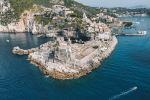

Lima
Lima's sprawling size and unique embrace of both past and present make it an unforgettably unique destination. Colonial architecture, gastronomical delights, and art are all part of the fabric of this city.

Bolivia
Bolivia, republic in central South America, bounded on the north and east by Brazil, on the southeast by Paraguay, on the south by Argentina, and on the west by Chile and Peru. Bolivia is one of the two South American countries without direct access to the sea.

Havana
Havana, Cuba's vibrant capital, is a city where the past and present coalesce to create an unforgettable travel experience. Walking through Old Havana (La Habana Vieja), a UNESCO World Heritage site, feels like stepping back in time. The cobblestone streets are lined with pastel-colored colonial buildings, baroque churches, and iconic plazas, such as Plaza de la Catedral and Plaza Vieja, each with its own unique charm and history.

Luxor
On the Nile's east bank sits Luxor, a onetime stronghold for Egyptian pharaohs. Key sites include Luxor Temple, Karnak Temple, and the Valley of the Kings.

Queen Elizabeth National Park
Queen Elizabeth National Park, nestled in southwestern Uganda, is a sprawling treasure trove of wildlife and natural beauty. Named in honor of Queen Elizabeth II during her visit in 1954, this park spans over 1,978 square kilometers and is renowned for its diverse ecosystems, including savannahs, wetlands, and forests.


